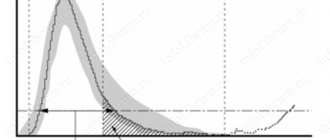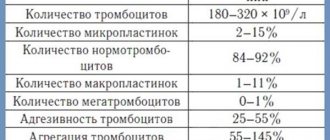Increased GGT and other enzymes (AST, ALT)
Since an elevated level of GGT in the blood does not accurately diagnose the disease and can be caused by other reasons, the doctor prescribes an additional examination of the liver.
First of all, this is the determination of the level of transaminases - ALT (alanine aminotransferase), AST (aspartate aminotransferase), as well as alkaline phosphatase. Comparing the level of GGT with the blood levels of ALT and alkaline phosphatase (ALP) can differentiate some diseases (additional examination is required to make an accurate diagnosis).
https://www.youtube.com/watch?v=eaqUGYz9D6g
In particular, if GGT is above 100, ALT is below 80, alkaline phosphatase is less than 200, there may be:
- drinking large amounts of alcohol;
- taking narcotic substances;
- diabetes;
- inflammatory processes in the gastrointestinal tract;
- large excess weight;
- increased triglyceride levels;
- taking certain medications.
GGT in a biochemical blood test exceeds 100, ALT is less than 80 and alkaline phosphatase more than 200 is observed when:
- slower flow of bile due to excessive alcohol consumption;
- decreased bile flow as a result of liver cirrhosis;
- difficulty in the outflow of bile due to gallstones or compression of the bile ducts by neoplasms;
- other reasons.
An increase in the level of gamma-glutamyltransferase to 100, with ALT and AST above 80 and ALP less than 200, may mean:
- the presence of viral hepatitis (A, B or C) or the Epstein-Barr virus (sometimes viral hepatitis occurs without an increase in the level of liver enzymes);
- excessive effects of alcohol on the liver;
- fatty hepatosis.
The GGT indicator is increased to 100, ALT exceeds 80 and ALP more than 200. This means that the outflow of bile is obstructed, and liver cells are also damaged. Among the reasons for this condition:
- chronic hepatitis of alcoholic or viral nature;
- autoimmune hepatitis;
- neoplasms in the liver area;
- cirrhosis of the liver.
To make an accurate diagnosis, additional examination and in-person consultation with a doctor is necessary!
The GGT indicator in a biochemical blood test diagnoses bile stagnation. This is a very sensitive marker for cholangitis (inflammation of the bile ducts) and cholecystitis (inflammation of the gallbladder) - it rises earlier than other liver enzymes (ALT, AST). A moderate increase in GGT is observed in infectious hepatitis and fatty liver (2-5 times higher than normal).
The best sanatoriums for liver treatment: treatment methods, conditions, prices
Since an elevated level of GGT in the blood does not accurately diagnose the disease and can be caused by other reasons, the doctor prescribes an additional examination of the liver.
First of all, this is the determination of the level of transaminases - ALT (alanine aminotransferase), AST (aspartate aminotransferase), as well as alkaline phosphatase. Comparing the level of GGT with the blood levels of ALT and alkaline phosphatase (ALP) can differentiate some diseases (additional examination is required to make an accurate diagnosis).
The GGT indicator in a biochemical blood test diagnoses bile stagnation. This is a very sensitive marker for cholangitis (inflammation of the bile ducts) and cholecystitis (inflammation of the gallbladder) - it rises earlier than other liver enzymes (ALT, AST). A moderate increase in GGT is observed in infectious hepatitis and fatty liver (2-5 times higher than normal).
Helpful information
Possible complications
Lack of timely diagnosis and treatment aimed at reducing the level of GGT enzyme can lead to the development of the following complications:
- weight loss;
- disruption of the process of food absorption;
- cirrhosis of the liver;
- inflammation of the gallbladder and its ducts;
- decreased protective functions of the immune system
- death if a change in the biochemical composition of the blood is caused by oncology of the pancreas, liver, or gall bladder;
- development of muscular dystrophy.
An increase in gamma HT in women of all age groups is caused by pathological reasons that are associated with disruption of the liver, gallbladder, and pancreas.
A decrease in the level of protein enzyme is caused by hypothyroidism of the thyroid gland. Restoring a stable level of GGT is necessary to maintain energy metabolism in the body, digestion and absorption of fatty foods, and the conversion of amino acids.
Gamma GT is increased - what does this mean?
The greatest activity of gamma-GT is observed in the kidneys, bile ducts, and liver, but the enzyme is also found in minimal quantities in other organs and systems (in the tissues of the brain, heart, skeletal muscles, intestines, spleen, prostate).
When the amount of GGT in the blood increases sharply, there may be several reasons for this:
- cholestasis (stagnation of bile);
- cytolysis (death of liver cells);
- exposure to alcohol;
- taking medications;
- oncological processes;
- pathologies of other organs.
Diagnosis of a disease that has caused a change in GGT levels is the prerogative of specialists, but exceeding the norm is always a signal from the body about the unfavorable condition of the liver.
Thus, an excess of GGT level by 5 times is observed when:
- taking certain medications;
- drinking alcoholic beverages;
- post-infarction state;
- congestive heart failure.
5-10 times - with:
- hepatitis;
- cirrhosis;
- other lesions of the liver and biliary tract.
10 times and higher – with:
- hepatitis, cirrhosis, cholangitis;
- oncological lesions of the liver;
- alcohol intoxication;
- blockage of the intrahepatic bile ducts or bile ducts;
- liver failure.
With all the variety of possible pathological conditions, only a few of them are diagnosed in the vast majority of cases.
Tumor processes
Cancer of the liver and other organs of the hepatobiliary system can be primary or metastatic. If cancer cells multiply in organs, liver function tests and gamma-GT begin to be released in increased volume. For large tumors, the analysis transcript shows a serious excess of the indicator - 10 times or more.
In the initial stages of oncology, the excess of the enzyme can be moderate.
Among other things, a pancreatic tumor can cause changes in tests. This organ is responsible for the production of a number of amino acids, which include gamma-glutamyl transpeptidase.
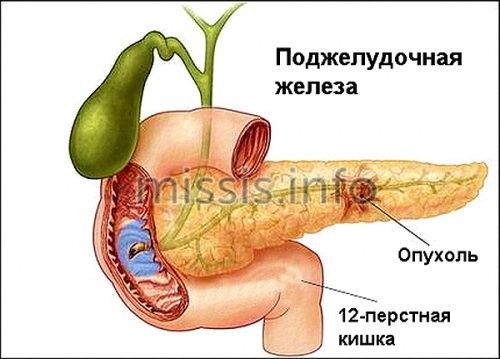
Therefore, after treatment, the amount of enzyme in the blood stabilizes, and in case of relapse it usually increases. A moderate increase in the number can indicate the presence of cysts and other benign tumors.
Treatment of elevated GGT in the blood: how to lower and return to normal
Treatment of elevated GGT levels begins with diagnosing the condition of the body and identifying the exact cause of the increase in this enzyme. Treatment of diseases that cause increased gamma-glutamyl transferase can reduce its level.
In addition to drug treatment, it is necessary to adjust your diet. A menu rich in fruits and vegetables helps reduce GGT. First of all, these are plant foods rich in vitamin C, fiber, beta-carotene and folic acid:
- carrot;
- leaf salad;
- spinach;
- apricots;
- pumpkin.
It is necessary to stop smoking and drinking alcohol. Recommendations from the World Health Organization on how to quit smoking and how to stop drinking will help you get rid of these habits.
- increased ALT and AST - increased bilirubin - platelets above and below normal - increased and decreased albumin
Treatment of elevated GGT levels begins with diagnosing the condition of the body and identifying the exact cause of the increase in this enzyme. Treatment of diseases that cause increased gamma-glutamyl transferase can reduce its level.
It is necessary to stop smoking and drinking alcohol. Recommendations from the World Health Organization on how to quit smoking and how to stop drinking will help you get rid of these habits.
To diagnose diseases of the liver or pancreas, you can donate blood from a vein for GGT. This abbreviation stands for gamma-glutamyl transpeptidase. If you receive results in which the gamma of HT is increased, then this may indicate gallstones, toxic liver damage, alcoholism, diabetes mellitus, pancreatitis in the acute or chronic phase, hyperthyroidism, even prostate, liver or pancreatic cancer.
How to treat pathology?
As for medications that can normalize gamma HT levels, they should be prescribed by a doctor in accordance with the reasons for the increase in the enzyme. In other words, in order to reduce the concentration of the enzyme, it is necessary to treat the underlying disease, stop taking inducer medications or alcohol. Since an increase in gamma TG is most often associated with choletasis, Urdoxa, Ursosan, Urso, Ursofalk, as well as other drugs based on ursodeoxycholic acid are prescribed. In some cases, vitamin C can reduce gamma-GT levels.
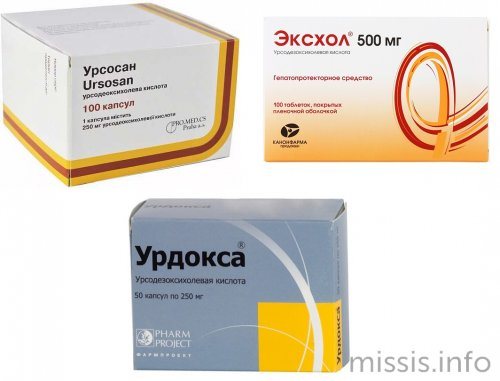
Liver functions are improved by Essentiale, Livolin, Rezalut and other essential phospholipids. If the increase in gamma-GT is associated with stagnation of bile, Alahol, Hofitol and other choleretic drugs are recommended. Alkaline mineral waters can also be prescribed, which will help reduce the viscosity of bile and facilitate its removal.
For pain in the liver area, Besalol, Spasmolitin, No-shpa and other antispasmodics are prescribed.
Skin itching, which often accompanies bile stagnation, is well relieved by Rifampicin or Cholestriamine. The gamma GT test is a very sensitive test that gives the specialist more information than alkaline phosphatase, ALT and AST. Therefore, it is often used not only to assess a person’s health status, but also to monitor the effectiveness of treatment.
When is it recommended to take GGT?
If you know about your problems with the liver, pancreas, kidneys or other organs of the gastrointestinal tract, then most likely you have already donated venous blood more than once in order to determine the gamma-GT indicator.
- chronic hepatitis, including its forms without jaundice,
- cancer of the pancreas, liver or prostate;
- alcohol addiction that you are struggling with.
In cancer, the GGT indicator is used to monitor the effectiveness of treatment; for the same purposes, it is used when fighting addiction to alcohol.
They find out whether the HT gamma is increased or not, also in order to diagnose liver damage that is accompanied by cholestasis. This can be, for example, with viral or congenital hepatitis and obstructive jaundice, biliary atresia. This indicator is monitored after myocardial infarction. In addition, it is possible to find out whether the level of gamma HT in the blood is elevated or not to check the hepatotoxicity of drugs.
The GGT blood chemistry test can be used in conjunction with other liver panel tests such as alanine aminotransferase (ALT), aspartate aminotransferase (AST), bilirubin and others. In general, when biochemistry shows an increase in GGTP, this indicates damage to the liver tissue, but does not indicate the specifics of this damage. In addition, GGT analysis can be used to monitor the treatment of patients with alcoholism and alcoholic hepatitis.
For a doctor to give a referral for a GGT test, the patient must have the following symptoms:
- Weakness, fatigue.
- Loss of appetite.
- Nausea and vomiting.
- Swelling in the abdominal cavity and/or pain.
- Jaundice.
- Urine is dark in color.
- The chair is light in color.
- Itching.
Gamma-glutamyltransferase is always elevated when alcohol enters the bloodstream, even in small quantities. Therefore, improper preparation for the analysis, that is, drinking alcohol the day before the analysis, gives incorrect results. Accordingly, gamma GT is very much increased in chronic alcoholics and drunkards. This is why the GGTP blood test can be successfully used to determine what stage of alcoholism a patient is at.
This test may also be given to patients who have a history of heavy drinking or who have undergone treatment for alcoholism. Cirrhosis is a very insidious disease, and it takes about 10-15 years to develop before it manifests itself. An increase in GGTP will allow timely detection of pathology, and timely treatment will delay the development of pathology.
Preparing for analysis
To avoid false indicators in the final results table, it is recommended to follow preparation measures. By following the rules listed below, the results will be the most reliable, which will help to correctly diagnose or refute the disease.
- Blood is donated on an empty stomach. To avoid deviations in blood counts caused by activation of enzymes due to food intake.
- Refuse to eat fatty, highly salted, spicy, overcooked foods that are difficult for the body for at least twenty-four hours (preferably forty-eight hours).
- It is recommended to give up physical activity two days in advance, since physical effects on the body also affect the final results;
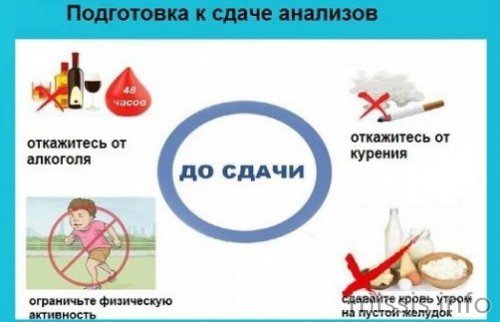
- A visit to a sauna, steam bath, or hot bath the day before can lead to fluctuations in normal values. You should avoid visiting places where the body is exposed to thermal effects;
- Limit alcohol intake and cigarette consumption at least 24 hours before the upcoming test;
- Stop using medications at least two days before the test. Drugs of certain groups can affect the parameters of a biochemical blood test.

Come to donate blood 10-15 minutes in advance. This is necessary so that the body calms down, shortness of breath goes away, and the body acclimatizes to the temperature conditions of the room (especially after a cold street). If you are very hungry, it is better to take food with you and satisfy your hunger immediately after blood collection.
Increased Gamma GT in women
Standard GGT levels in women may be slightly increased in the following cases:
- oncological formations in the mammary gland;
- use of hormonal contraceptives or drugs to maintain the balance of female hormones;
- during pregnancy.
First of all, the root cause is eliminated, followed by strict adherence to the diet and drug support for the liver. In the most extreme cases, surgical intervention is indicated (for oncology).
Reasons and mechanism for increasing enzyme activity
Gamma-glutamyl transpeptidase is directly involved in amino acid metabolism. It is a catalyst for the transfer of the gamma-glutamyl residue from the gamma-glutamyl peptide. The main organ where this enzyme is located is the kidneys: their content there is 7000 times higher than the amount in blood serum.
Gamma-GT analysis is elevated usually due to increased activity of this enzyme. And it manifests itself when problems with the liver or biliary tract begin. Normally, GGT activity is insignificant; it is directly related to the excretion of the enzyme, which is synthesized in the liver. That is why, even when minor problems appear, gamma GT increases.
Functions in the body
Gamma-GT is a protein enzyme that has the following functional activity:
- takes part in metabolic processes;
- is part of bile, which is subsequently used by the body for high-quality digestion and absorption of fatty foods;
- accumulates inside liver cells;
- participates in the production of the antioxidant glutathione;
- acts as a biological indicator that indicates the process of liver tissue breakdown;
- is part of the biochemical reaction of bile formation and its accumulation inside the gallbladder.
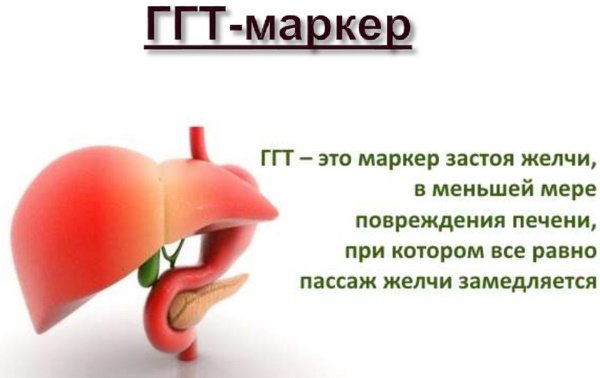
GGT is found in the blood as the natural renewal of liver cells occurs. A sharp surge in the concentration of this enzyme in the bloodstream indicates functional disorders in the liver tissue, as well as the possible development of an intoxicating effect.
Diagnosis of diseases
1. Cholestasis - the amount of the enzyme increases in both extrahepatic and intrahepatic forms of the disease. In this case, problems such as gallstones, obstructive jaundice caused by a liver tumor, and cholangitis appear.
2. Acute hepatitis of viral etiology, various toxic diseases.
3. Chronic hepatitis.
4. Pancreatitis - GGT will be increased both in acute and chronic forms.
6. Oncological diseases of the liver, pancreas or prostate.
In addition, if you are taking oral contraceptives, barbiturates, estrogens, or cephalosporins, your gamma TG levels may also be increased. You should not try to diagnose your illnesses yourself; only a doctor can diagnose them.
What is GGT?
In medical practice, GGT is known by another name - GGTP (gamma-glutamyl transpeptidase). Gamma-GT is not contained in the blood, but enters the circulatory system when the cell is destroyed. This process causes constant fluctuations in the value of the enzyme (in particular, an increase).
The main task of GGT is to stimulate the body's biochemical processes, such as liver detoxification. Thus, by taking a sample, it is possible to reliably determine the presence of a pathological process in the following organs:
- kidneys;
- liver;
- spleen;
- prostate;
- gallbladder.
In diseases of other organs, GGT also increases.
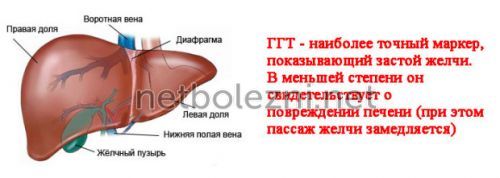
How is a blood test for Gamma GT performed?
A biochemical blood test for GGT is always prescribed to test for sensitivity to alcohol.
However, the study can be carried out in a number of other cases:
- during preoperative preparation;
- when diagnosing liver problems;
- when the patient develops alarming symptoms: nausea, vomiting, weakness, pain in the right hypochondrium;
- if signs of cirrhosis or hepatitis occur;
- to confirm detected oncology.
GGT level and age
If you go to donate blood to find out your gamma-glutamyl transpeptidase level, then you need to remember the following. Normally it is low, but the values obtained will depend on gender and age. Also, you should not rely on data from other laboratories; look only at the standards indicated in the research results. The level determined depends on the units of measurement and the equipment used.
In other laboratories there is a division depending on age. Thus, for adult women the norm will be the amount of enzyme in the range from 6 to 42 units, for men - from 10 to 71. In adolescents aged 12 to 17 years, the amount of GGT in the serum should not exceed 33 U/l in girls and 45 in young men. Regardless of gender, at the age of 6-12 years the upper limit of normal is considered to be up to 17 U/l, from 3 to 6 - up to 23, from 1 year to 3 - up to 18, from 6 to 12 months - up to 34.
The picture is slightly different with newborns, in whom the work of all body systems is just getting better. It's okay if GGT is up to 185 before 5 days of age, and before 6 months it can even rise to 204 U/L.
How to interpret the results
Even if you receive tests that show increased gamma-GT, you should not panic. To make a diagnosis, knowing only information about the activity of this enzyme in the blood serum is not enough. It is also important to find out the reaction of GGT to aminotransferases - GGT/AST or the ratio of GGT and ALT - this determines the spread of cholestasis in relation to cell membranes. The interaction of gamma-GT with other enzymes responsible for the development of cholestasis, for example, alkaline phosphatase, is also being clarified.
If the level of GGT exceeds the norm by 50 times, while the indicators for other enzymes are not too changed, then this indicates alcoholism. In addition, it will be increased in people who smoke more than two packs of cigarettes per day, are obese, or have eaten before taking the test. Please note that if the body mass index exceeds 30 kg/m2, then GGT may be 50% more.
The GGT norm in women and girls older than one year is from 6 to 29 units/l. It is worth noting that in women the enzyme increases with age in women. In men, the indicators are slightly higher, and therefore the GGTP norm is:
- 1-6 years: 7-19 units l;
- 7-9 years: 9-22 units l;
- 10-13 years: 9-24 units l;
- 14-15 years: 9-26 units l;
- 16-17 years: 9-27 units l;
- 18-35 years: 9-31 units l;
- 36-40 years: 8-35 units l;
- 41-45 years: 9-37 units;
- 46-50 years: 10-39 units l;
- 51-54 years: 10-42 units l;
- 55 years: 11-45 units l;
- From 56 years: 12-48 units l;
As already mentioned, the GGTP level is usually increased when liver tissue is damaged, but the interpretation of the analysis does not indicate the exact cause of the pathology. Typically, the higher the glutamyl transpeptidase level, the more severe the damage. Additionally, elevated GGT may indicate cirrhosis or hepatitis, but may also result from congenital heart failure, diabetes, or pancreatitis. In addition, GGT in the blood may be elevated due to the use of drugs toxic to the liver.
Elevated GGT levels may indicate cardiovascular disease and/or hypertension. Medicines that increase GGT include Phenytoin, Carbamazepine, and drugs from the barbiturate group (Phenobarbital). In addition, non-steroidal anti-inflammatory drugs, lipid-lowering drugs, antibiotics, and histamine receptor blockers (used to treat excess stomach acid production) can increase the level of this enzyme. Antifungals, antidepressants, and testosterone also increase GGT levels.
Low GGT values indicate that the patient's liver is normal and he does not drink alcoholic beverages at all. If elevated ALP levels are accompanied by very high GGT, this rules out bone disease, but if GGT is normal or low, a bone problem may be present. In addition, clofibrate and oral contraceptives can lower GGT levels.
Other possible reasons
Regular examinations and blood tests are recommended for anyone undergoing long-term treatment. Many tablets cause cytolysis (cell death) of the liver. This provokes the release of large amounts of liver enzymes into the blood. In women, this often happens when taking a course of estrogens and corticosteroids. The following gives the same effect:
- drugs for tuberculosis;
- a number of antibiotics, especially tetracyclines;

- barbiturates;
- neuroleptics;
- chemotherapy;
- non-steroidal anti-inflammatory drugs.
For treatment, you should take a course of hepatoprotectors - Essentiale, Heptral. All poisons, including alcohol, have a toxic effect on the liver. In chronic alcoholism, the amount of the enzyme can always be increased, and even after quitting alcohol it does not return to normal immediately. Among the rarer reasons for the increase in gamma HT in women are:
- systemic lupus erythematosus;
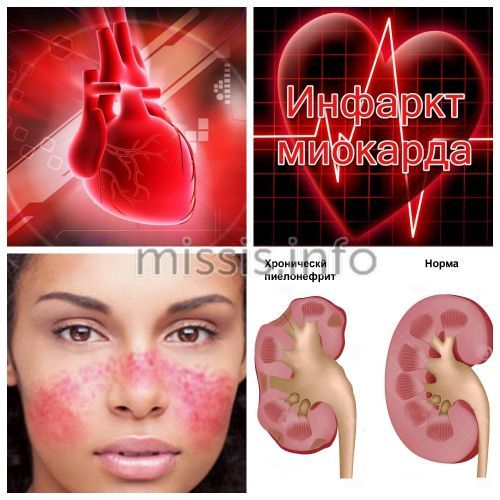
- Infectious mononucleosis;
- acute pyelonephritis;
- glomerulonephritis;
- kidney tumors;
- myocardial infarction;
- heart failure.

In some cases, the enzyme is elevated in thyrotoxicosis - hyperfunction of the thyroid gland. All of these pathologies do not occur without additional symptoms and are easily identified during examination.
Treatment and adjustment of indicators
If, according to the test results, gamma-GT is increased, how to correct this indicator must be determined with a doctor. After all, it is not the enzyme level that needs to be treated, but the reason that caused its increase. So, if it is increased due to excessive alcohol consumption, then there is only one way out - to give up alcohol.
In other cases, it is impossible to do without consulting a specialist. If we are talking, for example, about pancreatitis, then a diet is important, in which you should give up fried and fatty foods, chocolate, and coffee. It is also a good idea to take medications that affect liver function. Some patients with hepatitis are prescribed a drug such as Ursofalk. It can also be used for jaundice in newborns to help establish normal liver function.
GGT in a biochemical blood test in combination with other tests is often used to diagnose the condition of the liver, since its highest concentration is found in this organ. But although GGT is elevated in the blood during many diseases in which damage to the liver and bile ducts occurs, other pathologies, for example, those associated with the heart, can provoke its increase.
Effects of alcohol
The release of GGT is directly related to the consumption of alcohol - even when determining the initial high levels of the enzyme in the blood, giving up alcohol reduces the GGT content by 2 times after 10 days. If after a month the GGT level returns to normal, this means there is no pathology. If the indicators are close to exceeding the norm, it is worth thinking about completely giving up alcohol, since it is this that causes alcoholism and such serious conditions as cirrhosis, injuries while intoxicated, and delirium tremens.
In the case of a single alcohol intoxication, a period of abstinence is sufficient for the indicators to return to normal.
A test for GGT, done in conjunction with other studies of liver enzymes (ALT, AST), can determine not only alcoholism, but also alcoholic steatohepatitis - an inflammatory process with the parallel formation of areas of necrosis under the influence of ethanol metabolic products.

In other words, a penchant for drinking alcohol that has not yet developed into alcoholism. Some companies have made such a test mandatory during a medical examination, and in case of a positive result, it becomes a reason for recognizing professional unsuitability. Treatment of the identified pathology depends on the stage of the disease and is carried out only under the supervision of a doctor.



